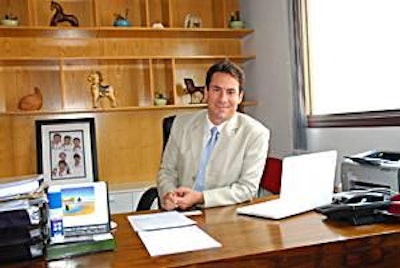
After two decades of strong performance in the animal health sector, Vietnam-based Anova Corporation has a new goal: to be the first Vietnamese company to offer consumers completely traceable and healthy pig and fish products.
In a country that is fraught with fragmented supply chains and questionable feed and production practices, Anova’s goal might appear to be impossible. However, Anova CIO David Serene has a plan; pull from resources inside Anova and from partner companies.
Anova Corp.
Anova is well-known in Vietnam and has been for more than 20 years. It consists of nine companies that operate three primary lines of business: veterinary and aquaculture medicines; distribution of feed, feed additives and veterinary raw materials; and pig and fish feed.
Anova’s plan is to create two secured and efficient animal product chains. One chain will be dedicated to pork for the internal market, and the other will be mainly directed to exporting fish, specifically pangasius.
A key part of the plan has to do with Anova’s infrastructure. Anova owns a fish feed plant, a pig feed plant, a storage facility and an animal health unit along the river in the industrial zone of Long An. The Long An location gives it a logistical advantage as the cost of transport by water is half the cost of transport by lorry.
The second part of Anova’s plan involves outside partnerships. In January it entered into a joint venture with Norway-based EWOS. The aim of EWOS, which took the leadership in fish feed production, is to produce secured feed in Anova’s Long An plant using its expertise in salmon feed production. In a second step, Anova also plans to produce secured fish filets – either through another partnership or through its own processing plant if necessary to ensure quality and chain durability.
Obtaining added value
For David Serene, CIO of Anova, the two fields (pig and fish) are driven by the same idea – integrating processing and sale of finished products in order to obtain added value at each step of the production chain. Pork will be branded by distributors as Metro, and fish will be sold through the EWOS network in Europe as well as by a new network to be built in America, since EWOS is less established in the U.S.
“The idea to enter the processing world didn’t come as a morning dream for us,” Serene said. “Our core business is linked with the efficiency of the entire chain – we need to reach the consumer with a real differentiation to be sure to stay alive upstream. With no added value to the consumer, no upstream link will be able to survive in a growing competitive market.”
However, chain integration is not simply a matter of connecting links. Integration requires that synergy, quality specification, control and communication all co-exist. While it is possible for these to occur naturally, it is much easier if there are financial relationships driving the system.
The need for reorganization
Pangasius production is one example of the urgent need for both system reorganization and chain integration. After several years of continuous growth, two problems have developed in the pangasius market. One, there has been a decrease in pangasius production because of the high cost of raw feed material. Two, there has been a decrease in the pangasius market price, in large part because of the world economy. As a result, sellers have begun to undersell each other, creating a type of vicious circle.
A truly integrated chain must begin with traceability that includes organized and controlled data collection, environment, drug use and feed formulation.
Creating an integrated chain
Creating an integrated chain is not a new idea. However, while there have been great advances in knowledge regarding drug and feed use in fish production, most Vietnamese farmers have not embraced it. The reason, at least on the surface, is simple; currently there is no incentive for them to do it.
What’s more, if a processor is not able to find added value through differentiation at the raw material input level, it will not be able to offer a price incentive to the farmer, and with no price incentive, the farmer will not change his practices. These practices may involve injecting fish with growth hormones or feeding them extremely poor quality fish feed.
However, the challenge of securing the supply chain does not bother Serene. “Our timing agenda is clear. At the beginning of 2011 we were tenth in fish feed production, but the market is dominated by two leaders. We aim to be the third at the end of this year” he explained.
Pig feed
Regarding pig feed, Anova launched its pig feed lines in March, prompting it to look for an international partnership such as the one with EWOS in order to enhance the processing link. “We are already connected to a processing plant (see sidebar) and we are looking for an international partnership, a company with expertise to improve processing and one that can develop sales with distributors,” Serene said.
Pork distribution in Vietnam is highly fragmented, with 95% of pork coming from small producers that are not very demanding regarding quality control. However, Serene is not concerned. In fact, he sees that situation as being helpful to creating a secure chain. Since the goals of international distributors are global ones, he notes, international distributors in Vietnam can’t take any risks regarding their global brand. This is all the more reason why more restrictive specifications will become more widely accepted and implemented.
See a video interview with Nicolas Isidor, quality manager of Anova Corp., as he talks about the company's strategy to increase pig and fish production in Vietnam at www.WATTAgNet.com/26688.html

















